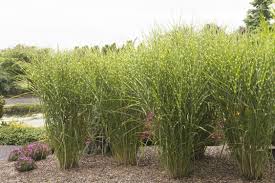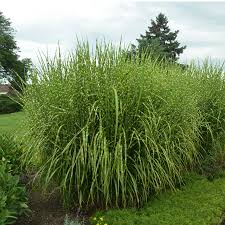Porcupine Grass, scientifically known as Hesperostipa spartea, is a remarkable native grass species that plays an essential role in the ecosystems it calls home. This perennial grass earns its name from the dense cluster of sharp bristles that adorn its seed heads, resembling the quills of a porcupine. While it may appear intimidating, this grass offers much more than just its prickly exterior.
Porcupine Grass boasts a tall and elegant stature, with stems that can reach up to four feet in height. Its slender leaves add a delicate touch to its overall appearance. The plant begins its growth in spring, with small green shoots emerging from the soil. As the seasons progress, these shoots develop into the majestic grass that graces the prairies.
This grass is not just a pretty face; it plays a vital role in maintaining the health of prairie ecosystems. Porcupine Grass is well adapted to surviving in areas with periodic droughts and fire, thanks to its deep-reaching roots and fire-resistant seeds. Its dense clumps create microhabitats that shelter small animals, insects, and birds from the elements and predators.
The presence of Porcupine Grass significantly impacts wildlife diversity. Many species find refuge within its thick tufts, including ground-nesting birds such as sparrows and meadowlarks. The seeds it produces serve as a valuable food source for various creatures, from songbirds to small mammals. Additionally, the grass’s structure offers protective cover for animals, allowing them to hide from predators and harsh weather conditions.
As human activities continue to encroach upon natural habitats, Porcupine Grass faces challenges to its survival. Efforts are being made to conserve and restore prairie ecosystems, recognizing the vital role this grass plays in maintaining biodiversity and ecosystem health. By protecting the habitats where Porcupine Grass thrives, we can ensure that it continues to fulfill its ecological role for generations to come.
Beyond its ecological importance, Porcupine Grass has also found its way into the hearts of many people. Its graceful appearance and tenacity in the face of adversity have made it a symbol of resilience and adaptability. Native American tribes have historically used various parts of the grass for practical purposes, such as for weaving baskets and creating shelter.
In the grand tapestry of the natural world, Porcupine Grass stands tall as both a protector and provider. Its unassuming beauty and essential contributions to the ecosystem make it a plant worth celebrating and safeguarding. As we continue to appreciate the intricate relationships between species, let us remember the quiet strength of Porcupine Grass and its place in the intricate web of life.
Read Also: Pulpy Kidney Disease in Sheep and Goats: Symptoms and Prevention Control Measures
Growing Porcupine Grass

Porcupine Grass, with its unique appearance and ecological significance, can be a wonderful addition to your landscape. Whether you’re looking to enhance the beauty of your garden or contribute to local wildlife habitats, here’s a simple guide to help you successfully grow and care for Porcupine Grass.
1. Site Selection: Choose a sunny location for your Porcupine Grass. This grass thrives in full sunlight and may not do well in shaded areas. Make sure the soil is well-draining to prevent waterlogging.
2. Soil Preparation: Porcupine Grass is adaptable to a variety of soil types, but it prefers well-draining soil with good fertility. Before planting, amend the soil with organic matter such as compost to improve its structure and nutrient content.
3. Planting: Plant Porcupine Grass in the spring, after the last frost has passed. Dig a hole slightly larger than the root ball of the plant. Place the plant in the hole at the same depth it was in its container and backfill with soil. Water thoroughly after planting to help settle the soil around the roots.
4. Watering: While Porcupine Grass is relatively drought-tolerant once established, regular watering is crucial during the initial growth phase. Water deeply but infrequently to encourage the development of deep roots. Once the plant is established, you can rely on natural rainfall in most cases.
5. Maintenance: Porcupine Grass requires minimal maintenance. Trim back any dead or damaged foliage in late winter or early spring before new growth emerges. This will help keep the plant looking neat and healthy.
6. Propagation: Porcupine Grass can be propagated from seeds or by dividing established plants. Collect seeds from mature seed heads and plant them in well-prepared soil in the fall. To divide the plant, dig it up and carefully separate the root clumps into smaller sections, then replant them.
7. Wildlife and Ecosystem Benefits: Allow the grass to produce seed heads, as they provide a valuable food source for various birds and small mammals. The dense growth of Porcupine Grass also offers shelter and nesting sites for ground-nesting birds.
8. Potential Concerns: Porcupine Grass is generally hardy and pest-resistant. However, keep an eye out for any signs of disease or pest infestations, especially during the plant’s early growth stages.
9. Winter Care: Porcupine Grass is cold-hardy and can withstand harsh winter conditions. Leave the foliage intact during the winter, as it adds visual interest to your landscape and provides additional shelter for wildlife.
As your Porcupine Grass grows and matures, take the time to appreciate its unique appearance and the positive impact it has on the ecosystem around it. Watch as birds visit to feed on the seeds and small creatures find refuge in its tufts.
By following these simple guidelines, you can successfully cultivate Porcupine Grass and contribute to the health and beauty of your local environment. Whether you’re a seasoned gardener or new to the world of plants, this remarkable grass species can offer a rewarding experience and a deeper connection to nature.
Caring for Porcupine Grass
Porcupine Grass (Hesperostipa spartea) is a captivating addition to gardens and landscapes, providing both aesthetic charm and ecological significance. To ensure its healthy growth and full potential, here’s a comprehensive care guide for nurturing your Porcupine Grass:
1. Soil Preparation: Prior to planting, improve soil quality by adding organic matter like compost. Porcupine Grass is adaptable, but well-draining soil enriched with nutrients will foster optimal growth.
2. Planting Time: Plant Porcupine Grass in the spring after the last frost date. This allows it to establish roots before facing winter conditions.
3. Planting Depth: Dig a hole that’s slightly larger than the plant’s root ball. Place the grass at the same depth it was in its container and backfill with soil, gently pressing down to eliminate air pockets.
4. Watering: Water your newly planted Porcupine Grass regularly to help its roots settle in. Once established, water deeply but infrequently to encourage deep root growth and drought tolerance.
5. Fertilization: Porcupine Grass doesn’t require excessive fertilization. A light application of a balanced, slow-release fertilizer in the spring can support healthy growth.
6. Pruning and Maintenance: In late winter or early spring, prune back any dead or damaged foliage to allow new growth to emerge. This step maintains the plant’s appearance and prevents disease.
7. Division: After a few years, consider dividing your Porcupine Grass to maintain its vitality. Dig up the clump, carefully separate it into smaller sections, and replant them in well-prepared soil.
8. Seed Collection: Allow some seed heads to mature on the plant. These seeds provide a crucial food source for birds and small mammals. Collect some seeds for future propagation efforts.
9. Pest and Disease Monitoring: Inspect your Porcupine Grass regularly for signs of pests or diseases, although it’s generally resilient. Address any issues promptly to prevent them from spreading.
10. Winter Care: Leave the foliage intact during winter to provide winter interest and shelter for wildlife. You can trim it back in early spring before new growth appears.
11. Environmental Considerations: Contribute to conservation efforts by planting native species like Porcupine Grass. Its resilience supports the health of local ecosystems.
Take time to appreciate the changing beauty of your Porcupine Grass throughout the seasons. Observe the interactions it facilitates between different species.
Try to share your Porcupine Grass care experiences with others to promote ecological awareness and the importance of native plants.
Caring for Porcupine Grass is a rewarding endeavor that goes beyond the visual appeal of your landscape. By nurturing this remarkable grass, you’re making a positive impact on biodiversity and fostering a connection to the natural world.
Read Also: Estimating of Age Using Dentition in Sheep and Goat
Benefits and Uses of Porcupine Grass

Porcupine Grass, scientifically known as Hesperostipa spartea, is a versatile and ecologically valuable plant that offers a range of benefits and uses. From its contribution to the environment to its practical applications, here are some of the key advantages of cultivating Porcupine Grass:
1. Erosion Control: Porcupine Grass has an extensive root system that helps stabilize soil and prevent erosion. Its deep roots anchor the soil, making it an excellent choice for controlling erosion on slopes and hillsides.
2. Wildlife Habitat: The dense tufts of Porcupine Grass provide shelter and nesting sites for various wildlife, including ground-nesting birds and small mammals. The grass’s protective structure offers a safe haven from predators and harsh weather conditions.
3. Biodiversity Support: By cultivating native plants like Porcupine Grass, you contribute to the preservation of local biodiversity. The plant’s seeds attract birds and small animals, enhancing the food chain and promoting a balanced ecosystem.
4. Soil Health Improvement:
As a native grass, Porcupine Grass is well adapted to the local soil and climate conditions. Its growth can improve soil health by increasing organic matter and nutrient availability, enhancing the overall quality of the soil.
5. Low Maintenance Landscaping: Porcupine Grass requires minimal care once established. Its drought tolerance and hardiness make it an ideal choice for low-maintenance landscaping, particularly in regions prone to dry spells.
6. Visual Appeal: The graceful appearance of Porcupine Grass, with its tall stems and unique seed heads, adds aesthetic charm to gardens, prairies, and landscapes. It provides visual interest and movement, especially when the wind rustles through its bristly seed heads.
7. Seed Collection: The seeds produced by Porcupine Grass are not only beneficial for wildlife but can also be collected for propagation or sharing with others who want to introduce native plants into their landscapes.
8. Educational Purposes: Porcupine Grass can serve as an educational tool, helping people learn about the importance of native plants in supporting local ecosystems. Its adaptability and contributions make it an interesting subject for ecological studies.
9. Traditional Uses: Historically, native tribes used various parts of the Porcupine Grass for practical purposes. For example, the grass was woven into baskets and mats, and its seeds were used as a food source.
10. Conservation Efforts: Cultivating Porcupine Grass aligns with conservation efforts to protect and restore native plant species. By choosing native plants, you contribute to the preservation of natural habitats and help combat the loss of biodiversity.
Incorporating Porcupine Grass into your landscape not only enhances the beauty of your surroundings but also supports a healthier environment for both wildlife and humans. Its numerous benefits and diverse uses make it a valuable asset in the quest for sustainable and thriving ecosystems.
Read Also: Recycling Challenges: How to Overcome the Obstacles
